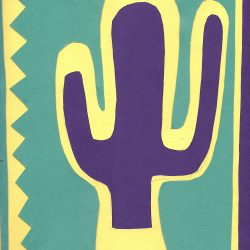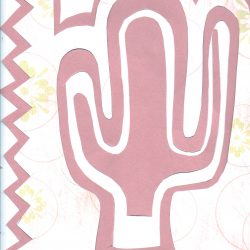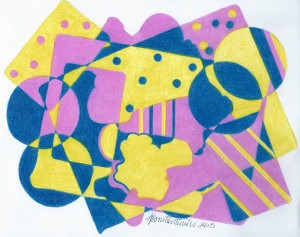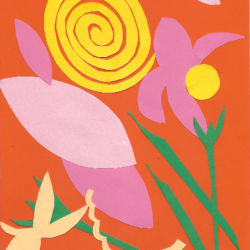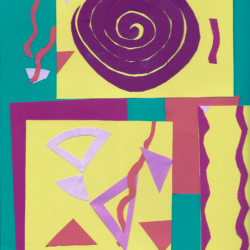“I have attained a form, filtered to the essentials.” Henri Matisse
Henri Matisse was one of the foremost artists of the twentieth century and along with Pablo Picasso and Marcel Duchamp, shaped the modern art movement. His method of painting, Fauvism, is “… a movement in painting typified by the work of Matisse and characterized by vivid colors, free treatment of form, and a resulting vibrant and decorative effect.” (Merriam- Webster Dictionary) He was primarily a painter and a sculptor but by the last decade of his life, paper cut-outs became the medium he used more than any other.
Art Nouveau and Symbolist Art influenced Matisse’s art. Like Art Nouveau and Symbolist Art, image (which included the human figure) and decoration were central components to his painting and later, his paper cut-outs.
The paper cut-out technique was originally used to design commissions for the Ballet Russe, the Barnes Foundation and other patrons during the 1930s. Instead of sketching his ideas, he cut shapes out of paper.
After a serious operation left him bedridden in 1941, Matisse began to further develop the cut-out technique. Confined to a wheelchair during the last decade of his life, he unable to paint or sculpt and the cut-outs became the only medium for his art.
An assistant painted paper with gouache paints. Matisse would have an image in his mind reducing that image to its basic shape. He would cut that image put using quick motions with the scissors. Matisse called the technique “drawing with scissors” on colored paper instead of using pastels, pencils or charcoal on blank paper. The shapes were laid on geometric shapes (squares, rectangles) of another color or on a white background. The cut-outs looked like Matisse’s Fauvist paintings only the approach to the subject and the materials and tools were different.
Today, Matisse’s paper cut-outs are as highly regarded as his paintings and sculptures.
To read more about Matisse’s paper cut-outs:
http://www.nytimes.com/2014/10/10/arts/design/henri-matisse-the-cut-outs-a-victory-lap
http://wwww.latimes.com/entertainment/arts//a-etc-cm-knight-matisse-review-20141023
Elderfield, John. The Cut-outs of Henri Matisse. NY: George Braziller, Inc, 1978.
To make paper cut-outs like Matisse, try the following tutorial:
Paper Cut-outs
Materials:
White paper or white poster board
Colored papers
Embroidery scissors
Glue stick
- Think of a theme, i.e., My Garden, The Four Seasons, a folk tale like The Tortoise and the Hare, etc. Or use geometric or abstract organic shapes to create a composition. Matisse often created patterns with the cut-outs. What are the main shapes that come to mind for the theme? What are the colors of those shapes? How many shapes will you sue for the composition? Matisse used animal shapes, forms from nature and the human form as well as more abstract shapes.
- Do not draw them on the paper. Cut the shapes freehand using quick motions with the scissors like Matisse. Cut them in different sizes and in a variety of colored papers. Experiment.
- Arrange them in a composition or throw them up in the air and see how they land on the paper or poster board. If you are gluing some of the shapes on several pieces of paper, throw those up in the air and see where they land.
- Glue some of the shapes on pieces of contrasting colored paper and some on the white poster board or glue all the shapes on the white board.
- What will you do with your composition? Matisse used some of his cut-out compositions to decorate the walls of his home.
Like this:
Like Loading...





